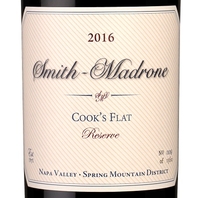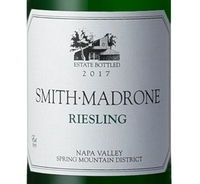Cultivation: 1. The act of preparing and working on land in order to raise crops.
2. To promote or improve the growth of a plant by labor and attention.
3. To practice and promote the development of an art, science, etc.
When twenty-two-year-old Stuart Smith purchased two hundred acres of abandoned vineyard land on Napa Valley’s Spring Mountain in 1971, he likely had no idea what was in store for him over the next fifty years. Thanks to an innate spirit of cultivation, he would go on, along with his brother Charles, to consistently produce some of Napa’s finest wines, improving and innovating along the way. I gladly jumped at the chance to sit down with Stu and his wife Julie Ann to ask a few questions, and I walked away with a deeper understanding that it’s the people and the journeys that they are on that are the true heart of the fine wine industry, and that it is their commitment and artistry that make what you and I get the opportunity to enjoy. I started with a question about the most positive change in the industry over that past fifty years, and that led us down a winding road of stories and insights.

Stuart (seated) and Charles Smith in the early days of Smith-Madrone ©Smith-Madrone
Stu jumped right in, stating that the most positive change over time has been the shift in American wine culture from jug wine to premium wine, and Napa Valley’s being poised to ride and even impel that shift. What was then a region with a few scattered producers rose to international preeminence thanks to the careful efforts of people that Stu counted as mentors and later colleagues – Andre Tchelistcheff, Joe Heitz, Frank “Laurie” Wood, Chuck Carpy and Bob Trinchero, to name a few – who led the way in the vineyard and in the winery to make wines of distinction. Stu is also quick to give credit to World War II exposing GIs to European wine culture, the Boeing 707 (which made it possible for Americans to travel to Europe affordably) and James Bond movies for shifting attitudes about wine.
Other positive changes Stu noted across fifty years include vineyard sciences of row spacing and exposure; rootstocks for specific soils, elevations and water supplies; mobile bottling trucks; and lightweight 4X4 tractors that are nimble in the hills.
In 1979, the Smith brothers entered their first vintage of Riesling – the 1977 – and took the best Riesling prize over German and French competitors in a “Wine Olympics” of sorts sponsored by Gault-Millau, a French food and wine publication. This let them know that they were on to something on Spring Mountain, which received AVA status in 1993. In Stu’s view, Riesling is the one wine that shows the pure essence of the grape from which it is made. Over the years, the brothers occasionally considered removing the Riesling for economic reasons, particularly during the Chardonnay boom, but they stuck with it and have found it to be their most consistent vineyard performer. Though it is more costly due to its small clusters, the Smith-Madrone Riesling block continues to produce wines that are arguably the best domestic expression of the grape. Some Pinot Noir that was part of the initial planting was eventually grafted over to Chardonnay, but the Riesling remains, so much so that customers suggested raising the price to keep it going.
Stu was instrumental in getting the name Riesling – the correct name of the variety – to become the domestic label name for the grape, which had been incorrectly called by several different names like Johannisberg Riesling, White Riesling, and others. Using a typewriter and the U.S. Mail, he was able to convince the TTB (The U.S. Treasury Department’s alcohol and tobacco Tax and Trade Board) of the proper name. It took a while to phase out alternate names completely thanks to marketing related forces, but the proper name now stands.
As for the biggest negative change over the past fifty years, Stu points to a growing predominance of higher pH in wine, which has led to wines

that he calls dull, boring and taking up space without being alive. Wines like these have no sustainable energy – they are attractive at first glance but lose one’s attention quickly. He was quick to point out that the first obligation is to give pleasure (a favorite saying of Stu’s is, “Wine is here to serve us. We’re not here to serve wine!”) but that such pleasure is magnified by the interactive characteristics of balance, layered complexity, congruence of aroma and flavor – in a word, synergy.
You’ll note in my review of the current Smith-Madrone Riesling that the pH and TA numbers are in the zone normally reserved for sparkling wines, yet the resulting wine is pulsing with life. Stu notes that California is not hamstrung with regulations like many world wine regions, and that that’s a good thing, but it does allow for things to happen that, long term, may be detrimental to the industry.
The winery’s Cooks Flat Reserve bottling is a tribute to George Cook, the original farmer of the property, and is meant to the best, most Bordeaux-like wine that they can produce. Not made in every vintage, it’s always an amazing bottling, and the current 2016 is no exception. I asked if the project has been successful and true to their initial intent. Stu said that the definition of success is different for a wine like this one than the rest of the portfolio, but that it has more than met expectations.
©Meg Smith
Finally, after several hours and not wanting to wear out my welcome – though I got feeling that Stu and Julie Ann would have happily talked until sunrise – I asked if there were any plans to retire. Stu joked that his exit strategy was “feet first” but quickly followed up by saying that there were no plans to retire, that the love of the work and the commitment to the land and being hands on with it has steadily become more of a driving force over time. Even with the most recent years being filled with fires and the COVID 19 pandemic, Stu’s response is “I can’t not try” even as age makes things a little harder.
As I got my thoughts together for this column, a favorite quote ran in front of me that summed things up and gave me a focus to build the story around: “Beautiful things don’t ask for attention” (James Thurber,
The Secret Life of Walter Mitty). Beautiful things just do what they do, and somehow, we seekers of beauty find them because of who or what they are. In the case of Smith-Madrone and its people, their products, and their continuing cultivation of the land, the wine, the fine wine industry, and consumers, it couldn’t be more appropriate. While there is plenty more that I could relate from our winding conversation at this most recent meeting, I’ll leave it here for now: I for one am glad to have found them years ago, and as always, I look forward to the next vintage.
More reviews by Rich Cook of Smith-Madrone wines, including the currently released 2016 Cabernet Sauvignon and the 2017 Chardonnay can be found in our archives. Here are two new impressions….
2016 Smith Madrone, Spring Mountain District - Napa Valley, California "Cook’s Flat Reserve" ($225):

Looking back at my review of the 2007 vintage of this wine – it’s first – I’m struck by the fact that I could say virtually the same words about this vintage. The blend is different, but the result is strikingly similar. A wine not made in every vintage, it’s only separated out from the rest of the Cabernet program when Stu, Charlie and Sam decide that it can do what it’s done here. There’s a “drink me now” aspect to this wine that’s undeniable, which of course can be dangerous to any plans to hold it long term. That said, I’d still recommend betting on this to have a reasonably long run, so if you’re the trophy hunter type who lives for the magic of a fully evolved masterpiece, don’t hesitate. Contains 54% Cabernet Sauvignon and 46% Cabernet Franc.
98 Points
2017 Smith-Madrone, Spring Mountain District - Napa Valley, California Riesling ($34):

I generally reserve scores above 94 points for wines that have the capacity to not only be delightful at present but also have the structure to age gracefully over several years. To see this number on a white wine is fairly rare in my backlog, but it’s there when it fits, as it certainly does here. The numbers help tell the story of this beautiful Riesling – 3.05 pH, .898 TA (!) – numbers typically seen only in sparkling wines due to early harvesting for high acidity. The 2017 is barely perceptibly sweeter than many of the previous vintages that I’ve had the opportunity to taste, but the impeccable balance will have you at the bottom of the bottle in no time. Tart apple, bright citrus, stony minerality and incredible finish push are the hallmarks here, and they promise to reward well into the future, which of course means that a case or two are in order. I’m sure that operators are standing by….
95 Points